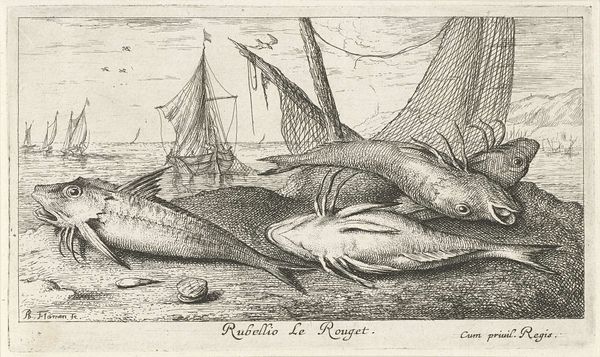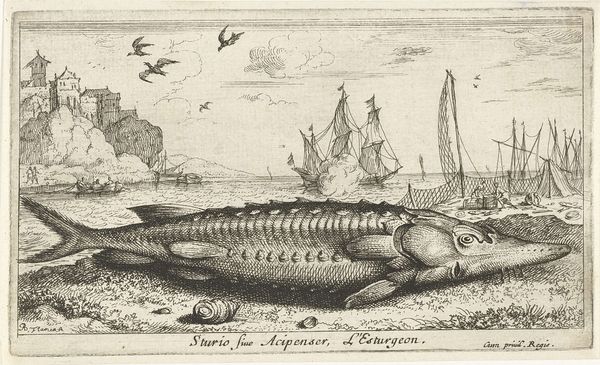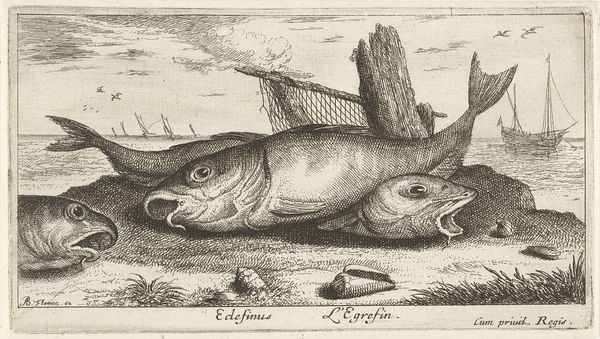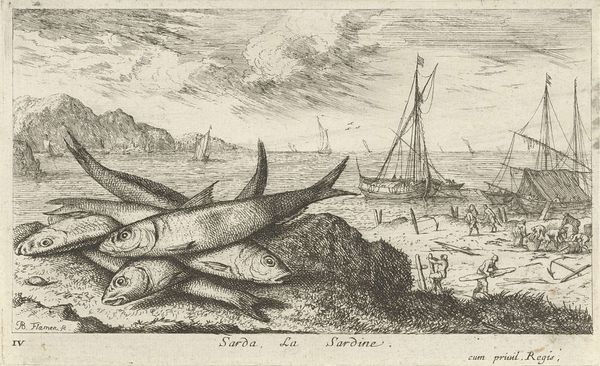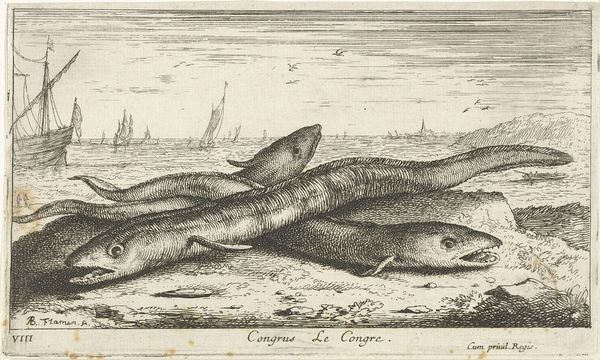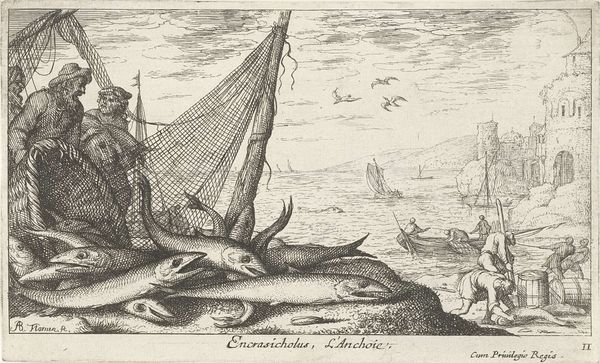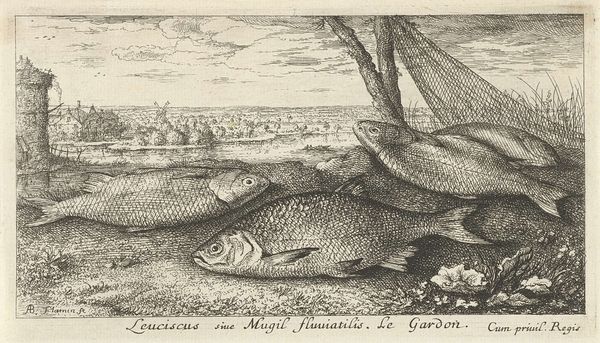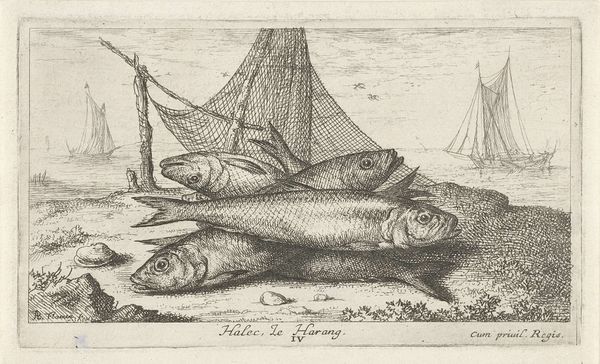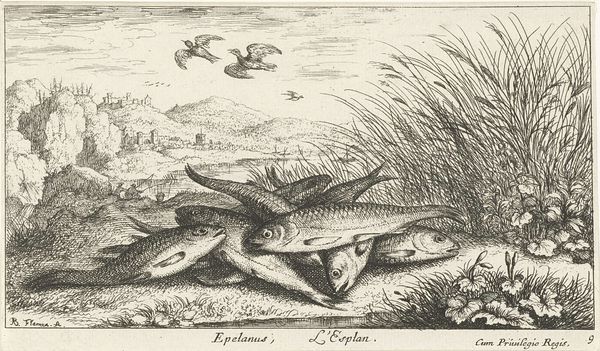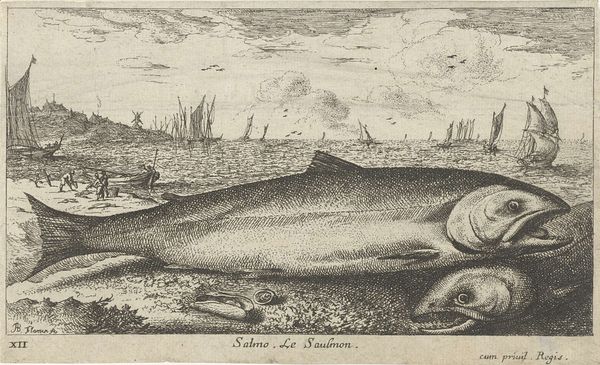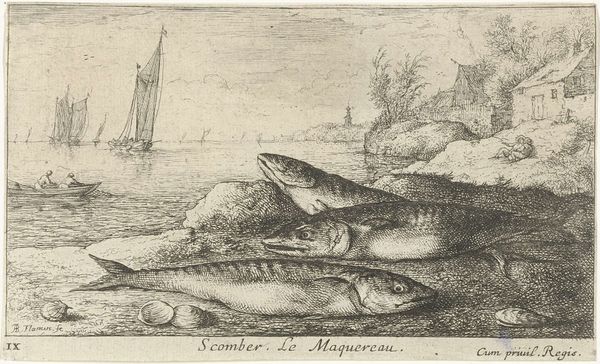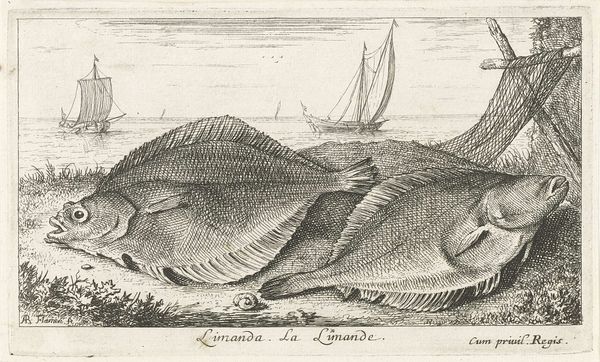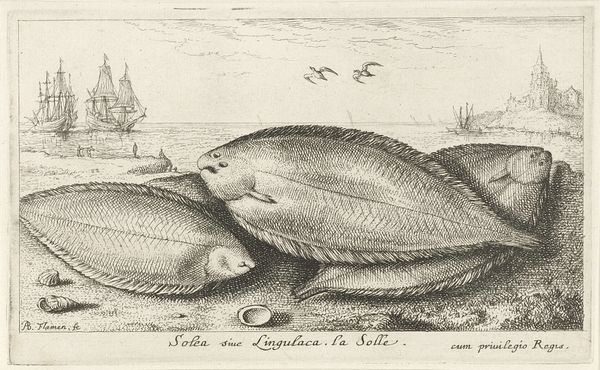
etching
#
dutch-golden-age
#
pen sketch
#
etching
#
landscape
#
genre-painting
#
realism
Dimensions: height 108 mm, width 179 mm
Copyright: Rijks Museum: Open Domain
Editor: Here we have "Six Smelts on the Beach," an etching by Albert Flamen, dating to 1664. It's interesting how the foreground detailing contrasts so starkly with the more implied, atmospheric rendering of the background. How would you approach an interpretation of this piece? Curator: The immediate emphasis falls upon the strategic deployment of line. Observe how the varying density and direction of hatching generate not only a sense of form, but also establish a visual hierarchy. The foreground, laden with detailed depictions of the fish, draws our eye, while the background employs sparser, more gestural lines, thus creating depth. Note also the use of light and shadow created by these lines. Editor: That's a keen observation. I also notice the way the composition guides your eye from the foreground up through the activity on the water and into the distance, making the whole scene cohesive, even though each zone has distinct details. Does that suggest a narrative, or perhaps a commentary, or is it simply about formal composition? Curator: To determine a concrete narrative or commentary would require contextual clues perhaps not fully provided within the piece itself. However, if we observe solely the structural aspects, we can infer certain aesthetic intents. The meticulous depiction of the fish contrasts the generalized forms of human activity on the boat; therefore, the composition itself seems to draw attention to the natural object over human form. How might the linear character highlight the subject matter? Editor: The lines highlight the textures and physical attributes of the smelts. I'm beginning to think that focusing on how elements are formally arranged and rendered gives us a vocabulary to meaningfully analyze a wide range of works. Curator: Indeed. It enables one to decipher the very mechanisms by which meaning is constructed, irrespective of contextual understanding. I would suggest that future viewings continue this examination, in an attempt to uncover more complex aspects of how images deliver specific details to create particular emotional outcomes.
Comments
No comments
Be the first to comment and join the conversation on the ultimate creative platform.
